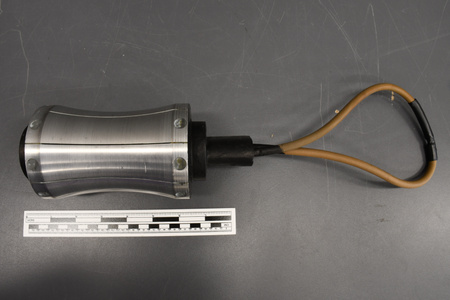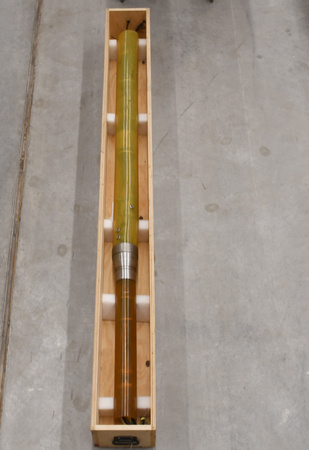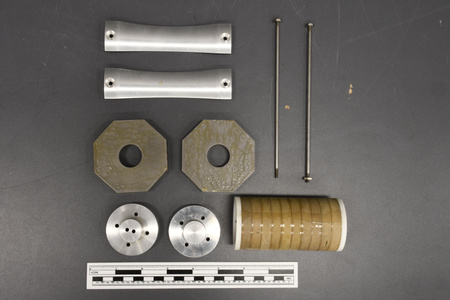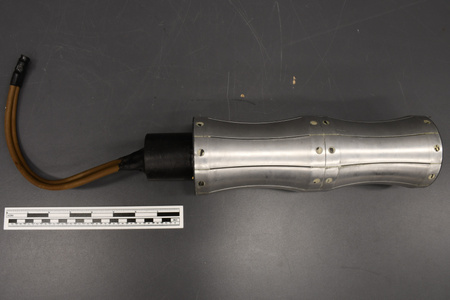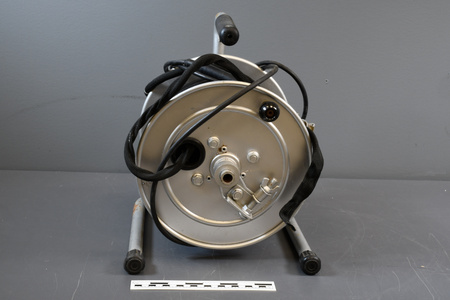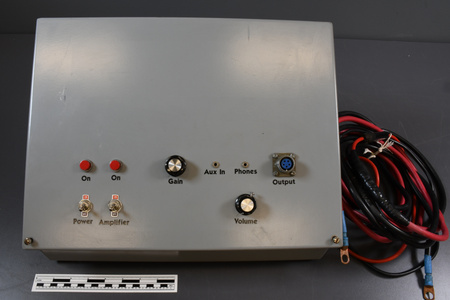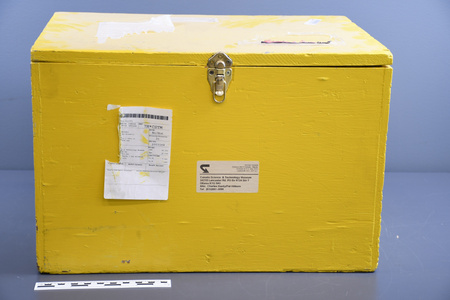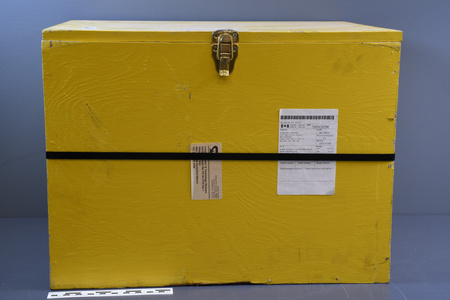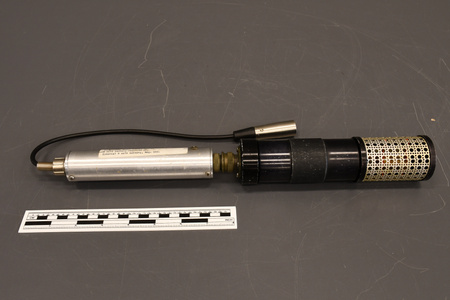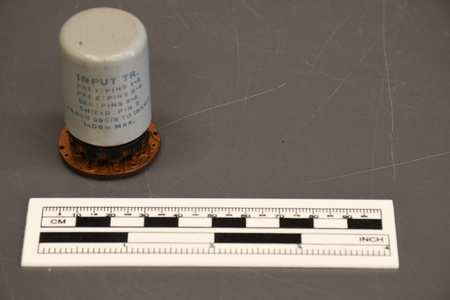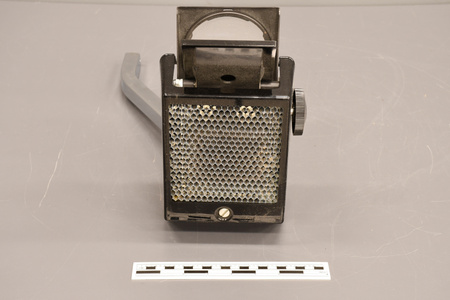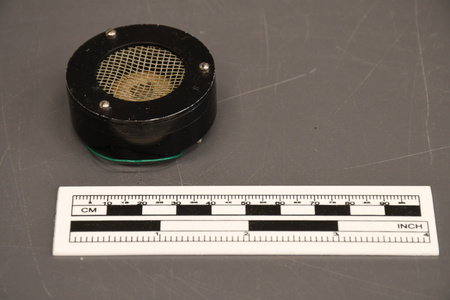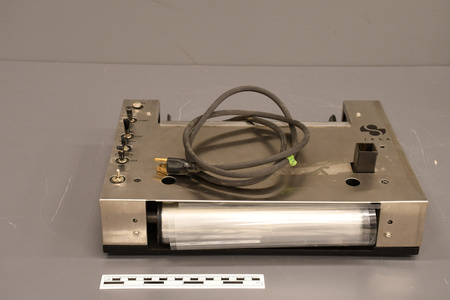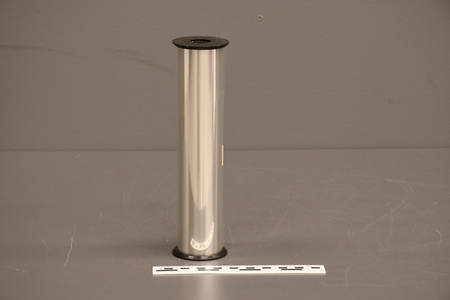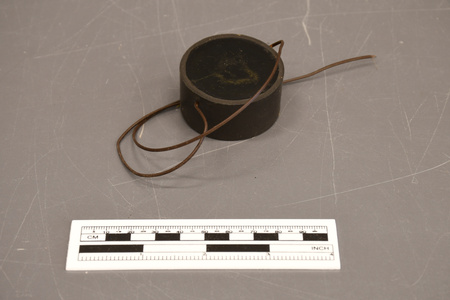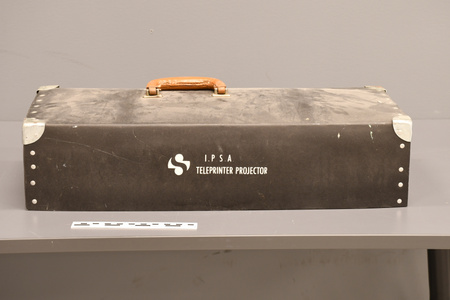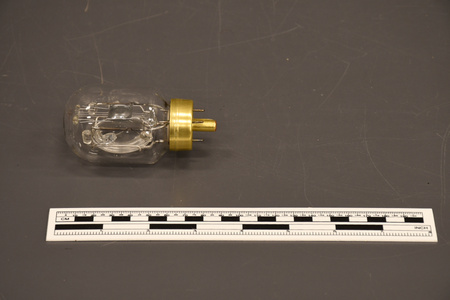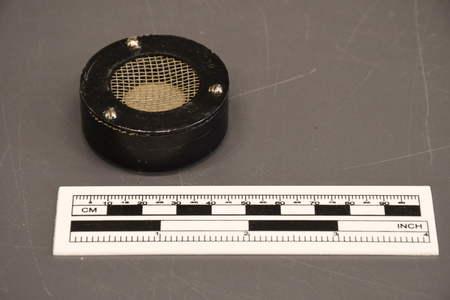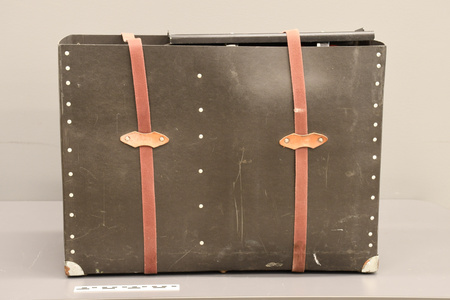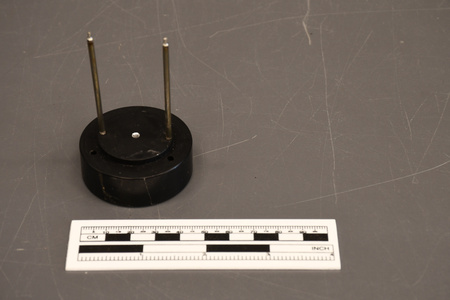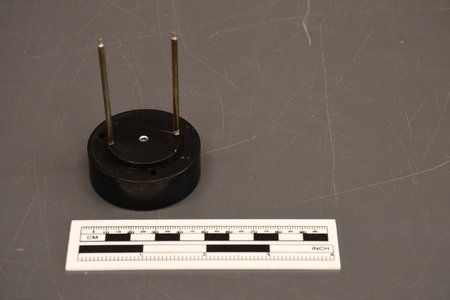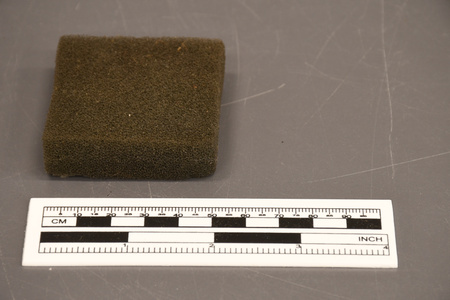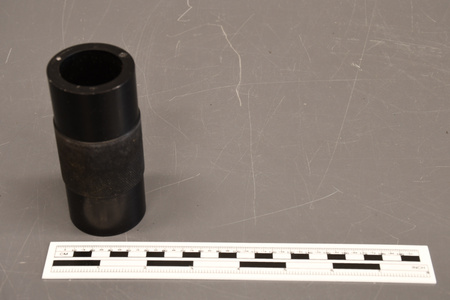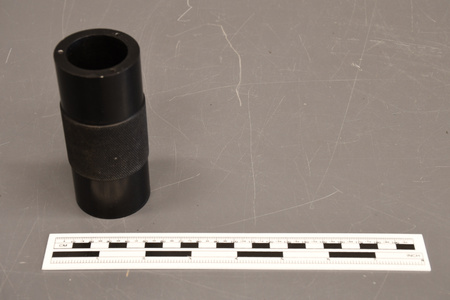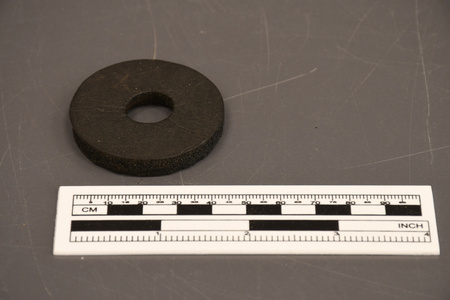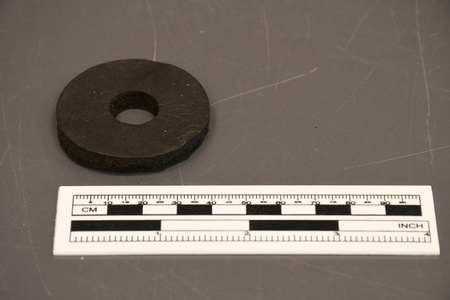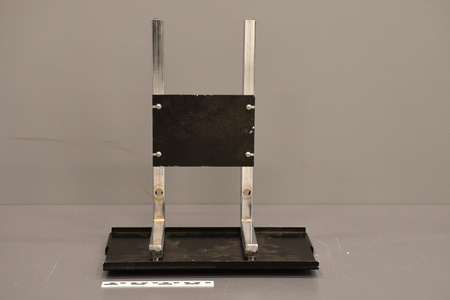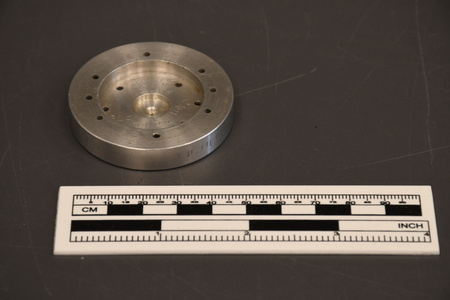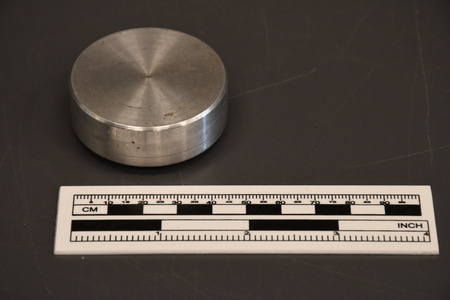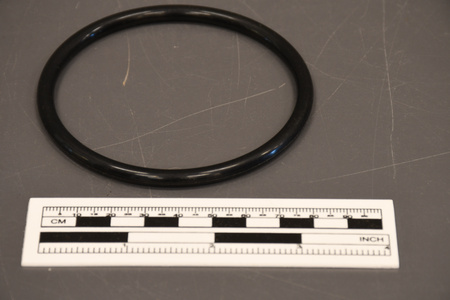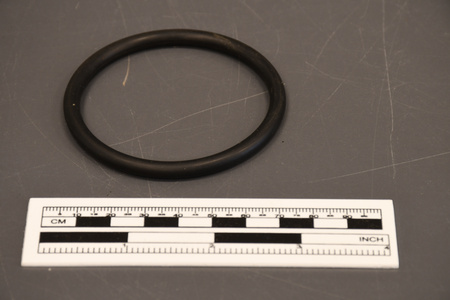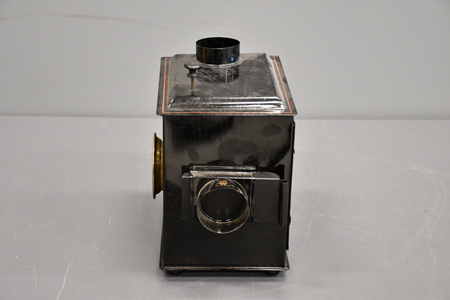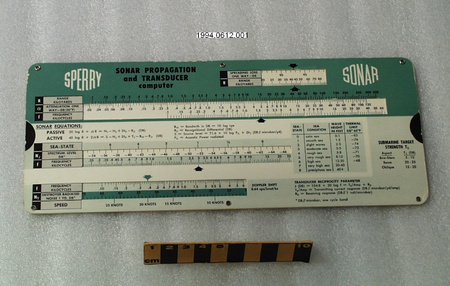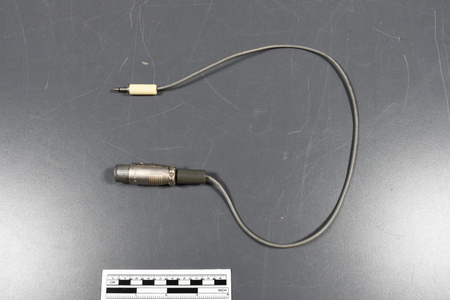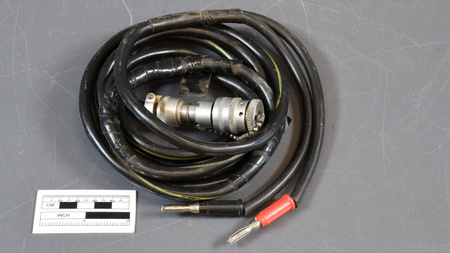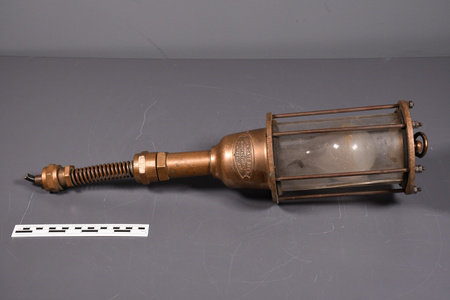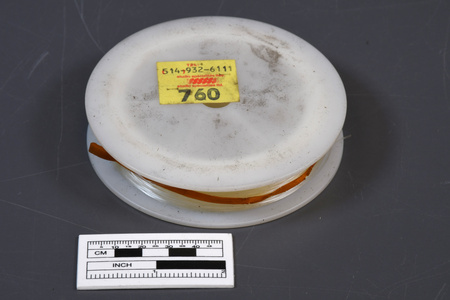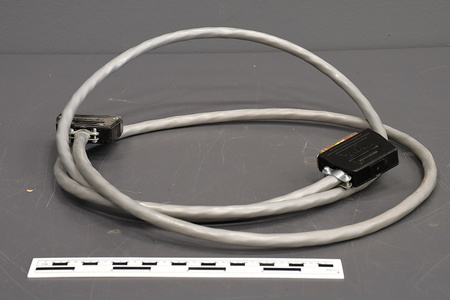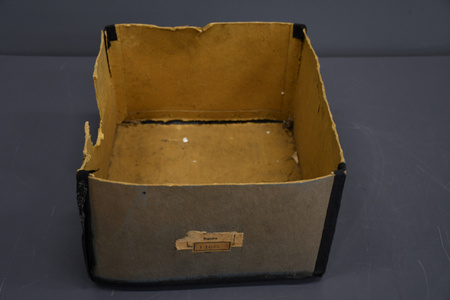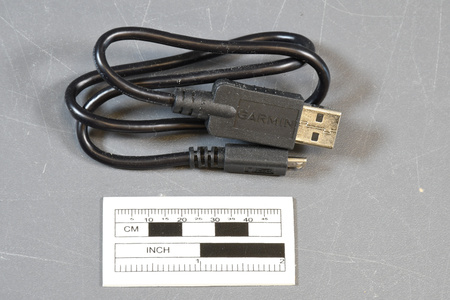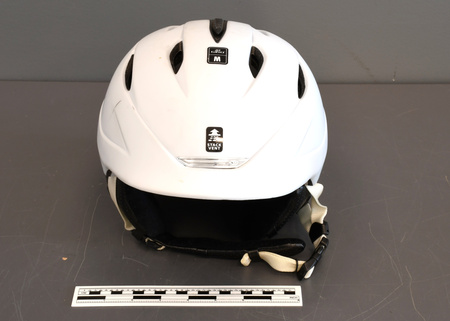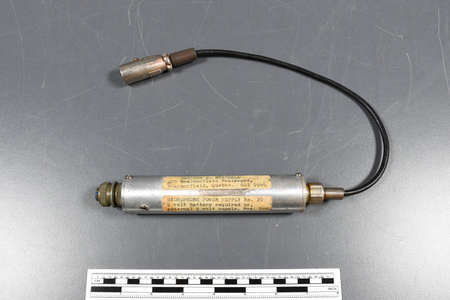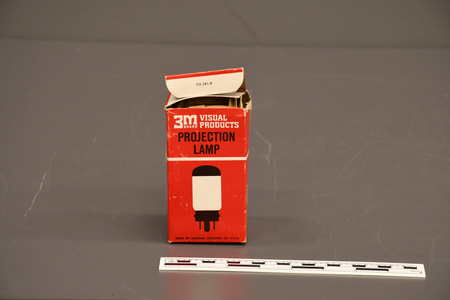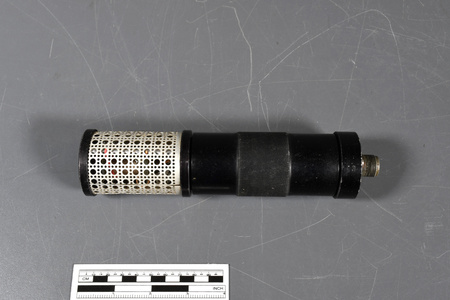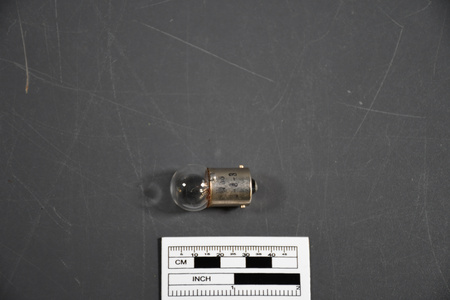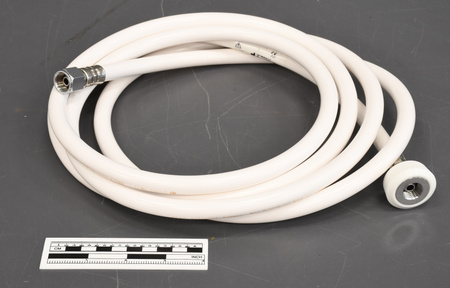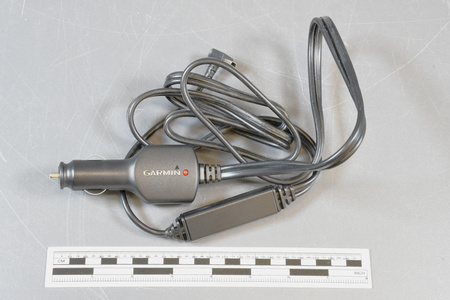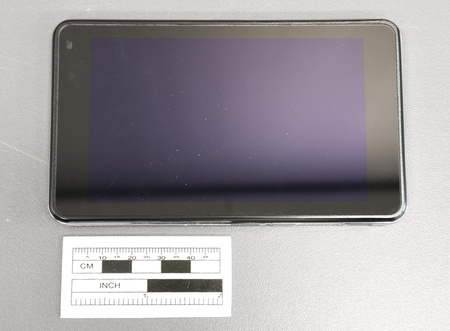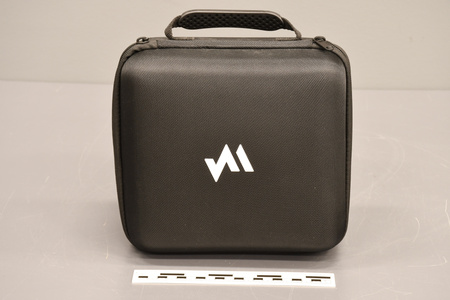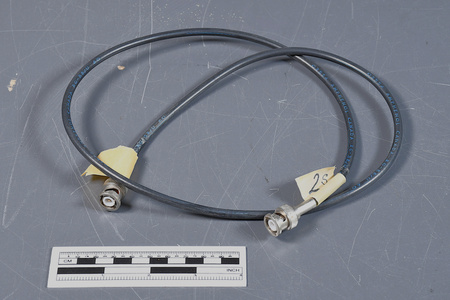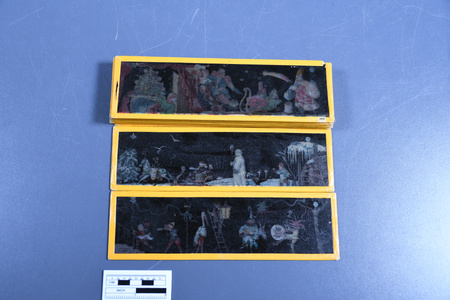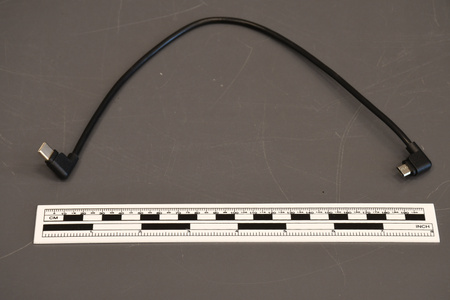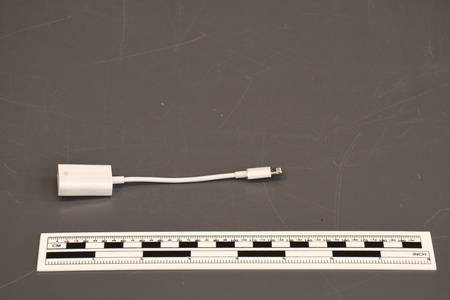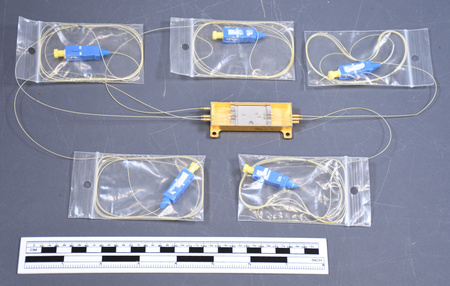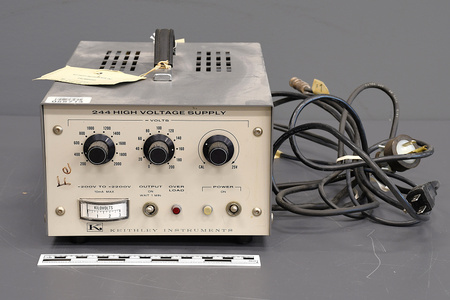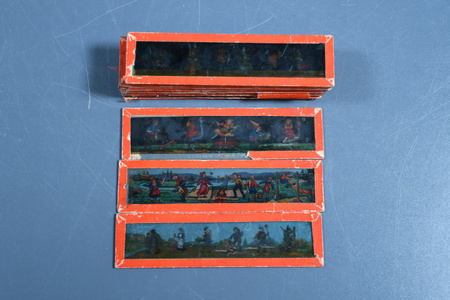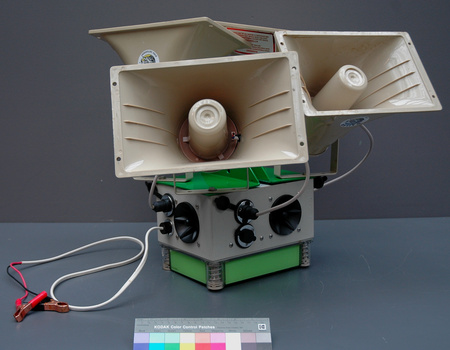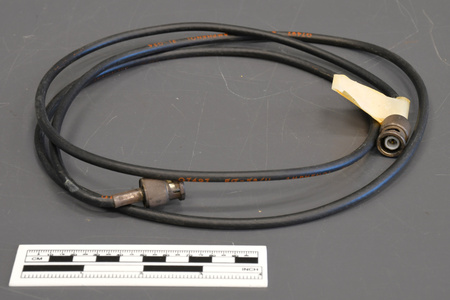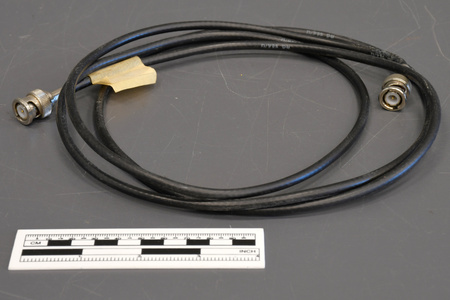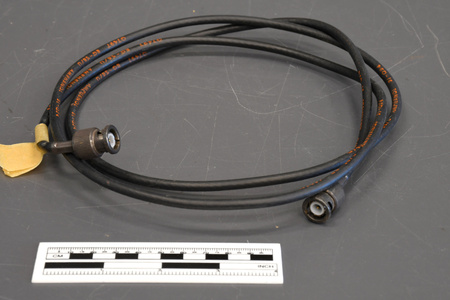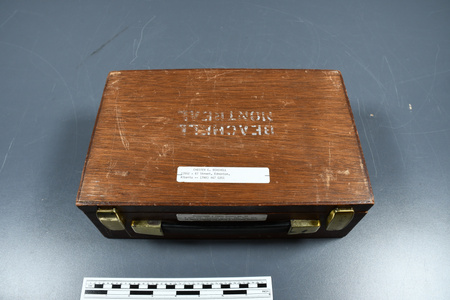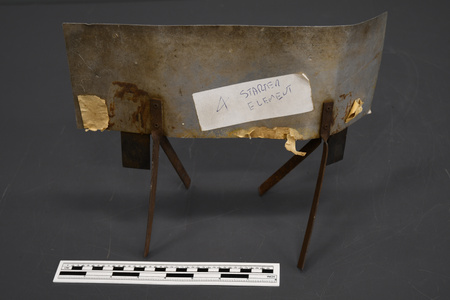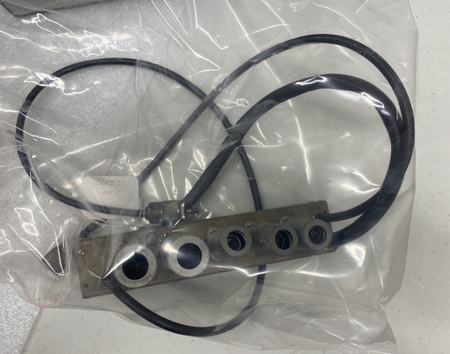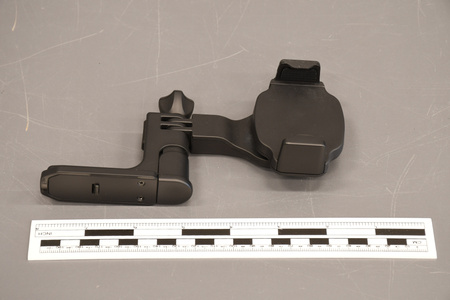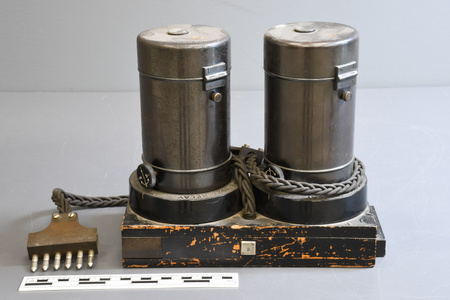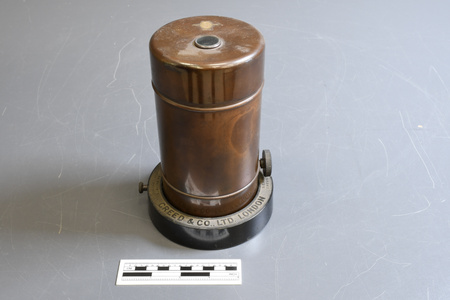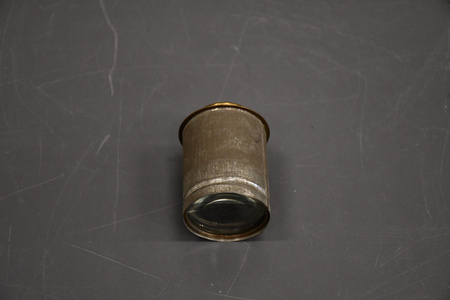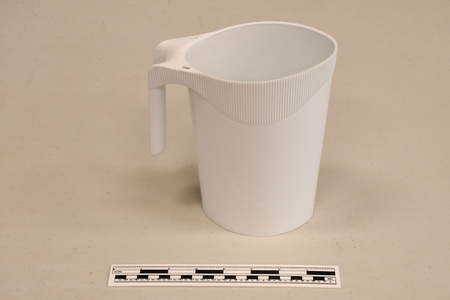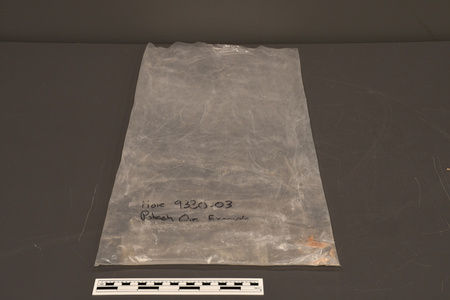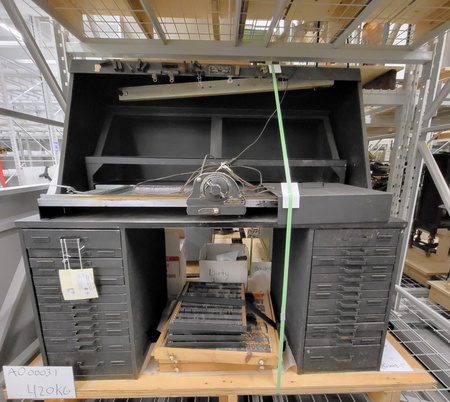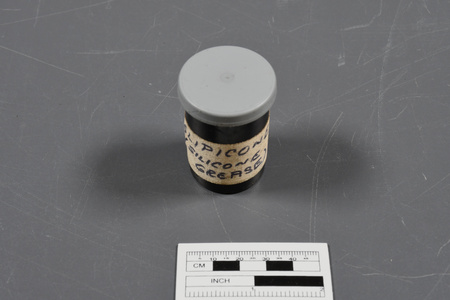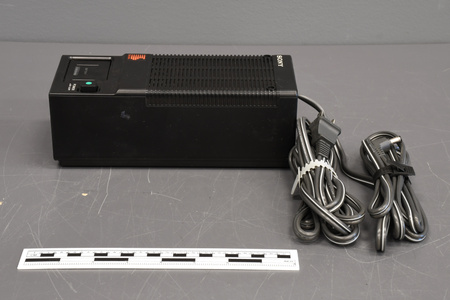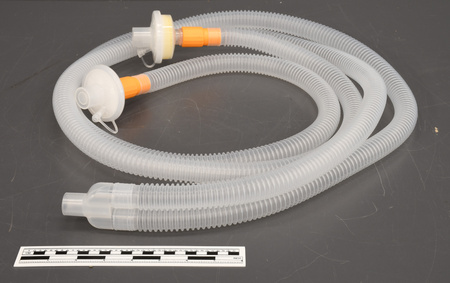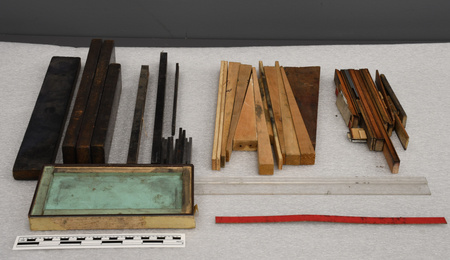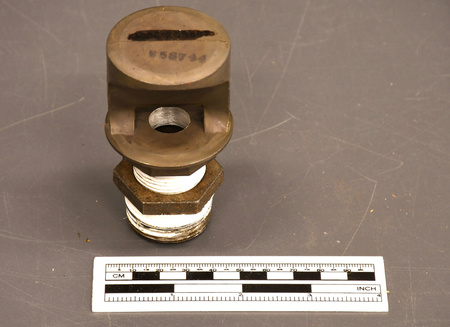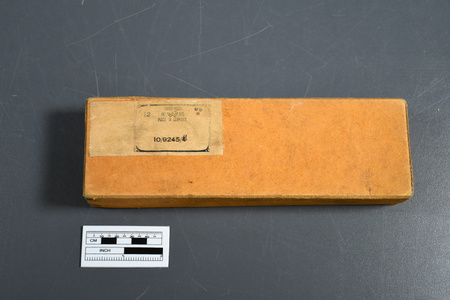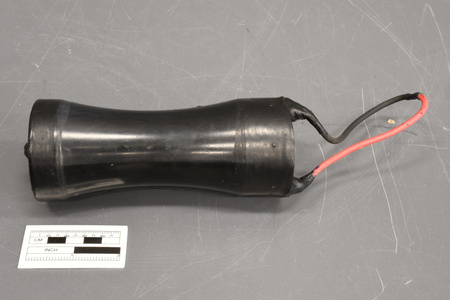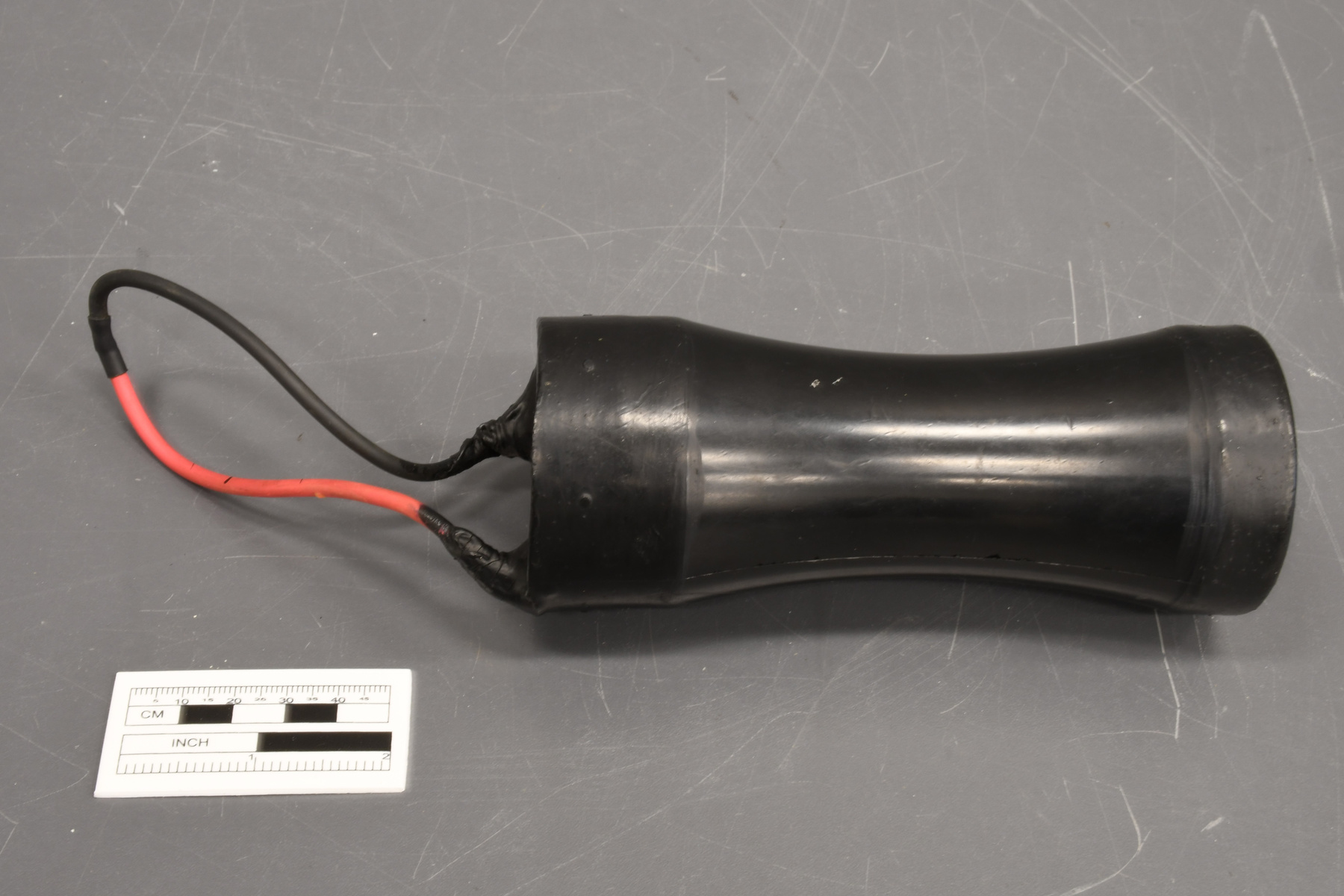Transducer
Use this image
Can I reuse this image without permission? Yes
Object images on the Ingenium Collection’s portal have the following Creative Commons license:
Copyright Ingenium / CC BY-NC-ND (Attribution-NonCommercial 4.0 International (CC BY-NC 4.0)
ATTRIBUTE THIS IMAGE
Ingenium,
2003.1160.001
Permalink:
Ingenium is releasing this image under the Creative Commons licensing framework, and encourages downloading and reuse for non-commercial purposes. Please acknowledge Ingenium and cite the artifact number.
DOWNLOAD IMAGEPURCHASE THIS IMAGE
This image is free for non-commercial use.
For commercial use, please consult our Reproduction Fees and contact us to purchase the image.
- OBJECT TYPE
- Barrel-stave Flextensional/underwater
- DATE
- 1988–1999
- ARTIFACT NUMBER
- 2003.1160.001
- MANUFACTURER
- DEFENCE RESEARCH AND DEVELOPMENT CANADA (DRDC) - ATLANTIC
- MODEL
- Class I
- LOCATION
- Dartmouth, Nova Scotia, Canada
More Information
General Information
- Serial #
- SX100CF-07
- Part Number
- 1
- Total Parts
- 1
- AKA
- N/A
- Patents
- N/A
- General Description
- An object comprised of metal and synthetic elements/Un objet fait avec des éléments en métal et synthétique.
Dimensions
Note: These reflect the general size for storage and are not necessarily representative of the object's true dimensions.
- Length
- 7.0 cm
- Width
- 9.0 cm
- Height
- 24.0 cm
- Thickness
- N/A
- Weight
- N/A
- Diameter
- N/A
- Volume
- N/A
Lexicon
- Group
- Communications
- Category
- Sound
- Sub-Category
- N/A
Manufacturer
- AKA
- Unknown
- Country
- Canada
- State/Province
- Nova Scotia
- City
- Dartmouth
Context
- Country
- Canada
- State/Province
- Nova Scotia
- Period
- Unknown
- Canada
-
The sonar transducer is a Canadian technology that originated in the 1980s at the Atlantic division of DRDC (Defence Research and Development Canada) and continues to influence several R&D programs for the Canadian Navy today. The sonar transducers were patented in 1991. Barrel-stave transducers have played a role in at least 26 DRDC Atlantic sea trials and nine joint trials with the Canadian Navy and Dalhousie University in Halifax. These compact devices were incorporated into low frequency active towed arrays and submarine communication buoys, and have also been deployed under the ice in Canada’s north to support the development of rapidly deployable surveillance systems. Le transducteur sonar est une technologie canadienne qui date des années 1980. Il était conçu par DRDC Atlantique (une division de Defence Research and Development Canada) et même aujourd'hui il continue d'influencer plusieurs programmes au R&D pour la Marine canadienne. DRDC a testé les prototypes des transducteurs sonars et ils ont été breveté en 1991. Les transducteurs de douves ont joué un rôle clés en pas moins de 26 essais en mer de DRDC Atlantique et en neuf procès conjoint avec la Marine canadienne et l'université Dalhousie à Halifax. C'est dispositif compact était incorporé à des réseaux remorqués à basse fréquence et des bouées de communication à sous-marin. Ils ont aussi été déployée sous la glace au nord du Canada pour appuyer le développement des systèmes de surveillance. - Function
-
Sonar transducers are used to both receive and transmit acoustic energy. These objects can be used to detect objects underwater as well as pinpoint their location. Les transducteurs sonores sont utilisés pour transmettre et recevoir de l’énergie acoustique pour la détection et la localisation des objets sous l’eau. - Technical
-
In general, underwater transducers can be divided into two fundamental types: hydrophones and projectors. Hydrophones are used for sound reception and are often designed to have a flat response over a wide frequency band below their resonance frequencies. Projectors are sound transmitters that are normally driven near their resonance frequencies for maximum acoustic power output. Depending on the design specifics, some transducers can be used as both hydrophones and projectors. Although piezoceramic-driven flextensional transducers fall into this dual-use category, they are most often employed as high-power projectors. They also helped biologists’ study acoustic whale communications. Généralement les transducteurs subaquatiques peuvent être divisées en deux catégories : les hydrophones et les projecteurs. Les hydrophones sont utilisés pour la réception au son et ils sont conçus pour avoir une réponse uniforme pour une grande bande de fréquences sous leur propre fréquence de résonance. Les projecteurs sont des émetteurs de son. Ils fonctionnent à un rythme proche de leur fréquence de résonance maximale pour s'assurer d'avoir une puissance acoustique de sortie le plus élevé possible. Tout dépend du modèle et ces spécifications, des transducteurs peuvent être utilisés doublement comme un hydrophone et un projecteur. Les transducteurs d'extension flexible fait en piézo-céramique tombe dans cette catégorie et ils sont souvent employés comme des projecteurs à haute puissance. Ils sont aussi utilisés pour aider les biologistes à étudier communications acoustiques des baleines. - Area Notes
-
Unknown
Details
- Markings
- On top of the black synthetic head/Sur le dessus de la tête synthétique: "7".
- Missing
- None apparent/L'objet a toutes ces pièces.
- Finish
- A metal artifact covered in a black synthetic sleeve. The artifact flares at both its top and bottom. A single button shaped foot is visible in the center of its circular base. The head of the artifact has a single cable that exits one end of its head and enters it again on the other side. The cable has a red synthetic sleeve on one half and a black synthetic sleeve on the other. A number is written in grey ink on the top of its head. Un objet fait en métal qui est recouvert avec une manche synthétique de couleur noire. L'artefact est évasé à son haut et bas. Un pied en forme d'un bouton est visible au centre de la base circulaire de l'objet. Un câble synthétique sort d'un côté de la tête et rentre de l'autre côté. Le câble a une manche synthétique de couleur rouge sur une moitié et de couleur noire sur l'autre. Un numéro est écrit en encre grise sur le dessus de la tête.
- Decoration
- N/A
CITE THIS OBJECT
If you choose to share our information about this collection object, please cite:
DEFENCE RESEARCH AND DEVELOPMENT CANADA (DRDC) - ATLANTIC, Transducer, between 1988–1999, Artifact no. 2003.1160, Ingenium – Canada’s Museums of Science and Innovation, http://collection.ingenium.ca/en/id/2003.1160.001/
FEEDBACK
Submit a question or comment about this artifact.
More Like This
